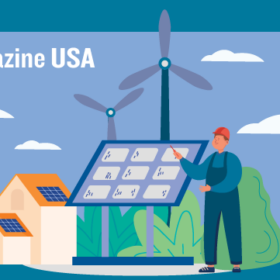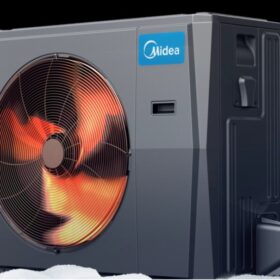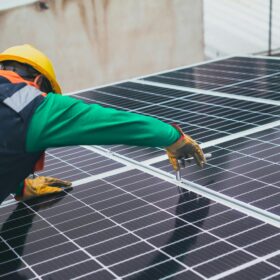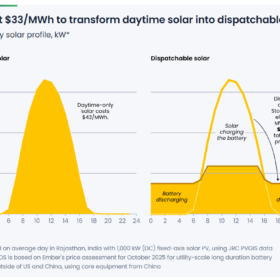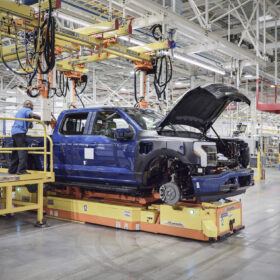Carrier launches new air-to-water heat pumps for residential, commercial applications
Carrier, a heating solutions provider, introduced a new 4-14 kW line of heat pumps with a coefficient of performance of up to 4.90. The system use propane as the refrigerant and can reportedly reach leaving water temperature of 167 F.
Sunrise brief: REC Silicon shuts down polysilicon operations in Moses Lake
Also on the rise: Predictions for the solar energy landscape in 2025. Samsung launches monobloc air-to-water heat pumps. And more.
Samsung launches monobloc air-to-water heat pumps
Now available in the North American market, the manufacturer says these heat pumps work with new AI technology and reportedly perform better when connected to a PV system.
Panasonic offers residential heat pump solution that uses solar radiation forecasts
Panasonic has unveiled a new version of its Eco Cute CO2 heat pump that produces domestic hot water mostly during daytime based on solar radiation data. It integrates a dedicated app to obtain day-ahead solar forecasts and schedule water heating hours for the next day.
Panasonic releases new R32 heat pumps
Panasonic launched its new R32 heat pumps for the Canadian market, introducing the Exterios Z and ClimaPure XZ series. The models offer heating capacities ranging from 10,900 Btu/h to 28,800 Btu/h, depending on specifications.
In case you missed it: Five big solar stories in the news this week
pv magazine USA spotlights news of the past week including market trends, project updates, policy changes and more.
In case you missed it: Five big solar stories in the news this week
pv magazine USA spotlights news of the past week including market trends, project updates, policy changes and more.
As more buildings use heat pumps, four technologies can provide grid support
Wider use of electric heat pumps to heat buildings creates a larger market for renewable energy, but also presents challenges, which can be met through building insulation and weatherization, cold climate heat pumps, thermal energy storage systems, and higher-voltage distribution grids, a report says.
Copeland debuts industrial heat pump
The U.S. heating specialist said its Vilter VQ95 heat pump is an ideal solution for district heating and industrial processes. It has a heating capacity of 1 MW to 5 MW per skid and can reportedly provide a temperature of up to 95 C.
Sunrise brief: California bill requires utilities to evaluate grid-enhancing technologies
Also on the rise: Polysilicon prices steady amid global trade policy uncertainties. First floating solar installation in Utah. And more.

